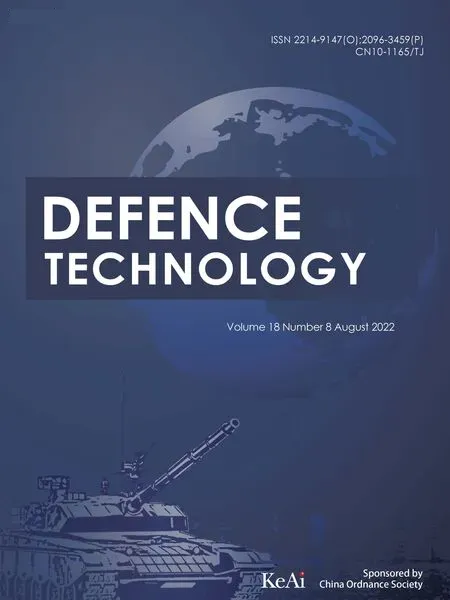Recent applications of carbon-based composites in defence industry:A review
M.M.Hrussni ,S.M.Spun ,b,* ,Gohr Ndeem ,Thrim Rfin ,W.Kirubnnd
a Advanced Engineering Materials and Composites Research Centre (AEMC),Department of Mechanical and Manufacturing Engineering,Universiti Putra Malaysia,43400,UPM Serdang,Selangor,Malaysia
b Laboratory of Biocomposite Technology,Institute of Tropical Forestry and Forest Products (INTROP),Universiti Putra Malaysia,43400,UPM Serdang,Selangor,Malaysia
c Department of Civil Engineering,Universiti Putra Malaysia,43400,UPM Serdang,Selangor,Malaysia
d Department of Civil Engineering,Balochistan University of Engineering & Technology,Khuzdar,89100,Balochistan,Pakistan
Keywords:Carbon materials Char Carbon CNT Graphene Composite Defence technology
ABSTRACT Carbon-based composites,including carbon reinforced composites and carbon-matrix composites,in defence technologies have raised a lot of attention due to its significant physical capabilities,superior thermal and mechanical stability,and its eco-friendly nature.Carbon-based composite which incorporating with various carbonaceous materials such as coke,char,black carbon,activated carbon,carbon fibre and other carbon nanomaterials(carbon nanotubes,carbon nanofibres,graphene and graphite)are the greatest viable option for the development of advanced defence technologies.In this review article the characteristics of carbon-based materials and its composites are discussed for their distinct application in defence sectors;aeronautics,maritime,automotive,electronics,energy storage,electromagnetic interference (EMI) shielding and structures.The origin of carbonaceous materials and its production techniques were discussed.Carbon-based composites have a promising future in defence technology,particularly in chemical sensors,drug delivery agents,radar technologies,and nanocomposites due to their low cost,easy availability,flexibility in design and processing.
1.Introduction
Advanced defence technology demands include not solely efficiency and security,yet also the material utilized [1,2],specifically its mechanical and physical features.One of the most significant strategies of sustainable development is the invention of lighterweight composites.Composite materials are frequently applied in various sectors such as food packaging [3,4],automotive [5],biomedical [6],electronics [7,8],and architectures [9,10],thus,substituting the application of conventional metal and petroleumbased materials [11].Not just about the costs,which is significant for both energy conservation and environmental protection,but more because of its enhanced mechanical attributes.These attributes are frequently equivalent to or even superior than those of conventional materials.As a result,the use of composite materials has grown increasingly common in recent years.
With those features,composite materials are at the top of the list of innovative engineering materials that may be used in any sector of engineering or technology.Composites and nanocomposites have several benefits which draw numerous researchers’attention,including their high specific strength,stiffness,and fatigue resistance as well as low cost and facile process for automotive,aerospace,defence and various advanced applications[12-17].E-glass fibre reinforced composite laminates,for example,have been shown to be more viable for various defence applications owing to their low cost,ease of supply,as well as design and processing flexibility [18].Combining the criteria of defence,portability,and effectiveness which has been the most complex criterion in the realm of defence engineering.Due to their lightweight and improved functionality,polymer matrix composites are widely employed in defensive components [19].Numerous synthetic fibres,including such glass,Kevlar,and carbon [20-24],have recently gained popularity in engineering applications to give resistance to high impact hazards,and Kevlar is one of them.However,synthetic materials have numerous drawbacks,such as high price and lack of environmental friendliness,prompting researchers and industrial practitioners to seek alternatives.
In recent years,carbon-based nanomaterials have piqued the interest of researchers as a source of high-strength and versatile lightweight composite materials [25-29].Following several empirical investigations demonstrated excellent increases of the mechanical characteristics of polymeric matrices modified with various type of filler concentrations[30],the majority of study has concentrated on graphene and carbon nanotubes (CNTs).Recent research has shown that graphene and carbon nanotubes have superior features,including improved dispersion and a lower production cost.CNTs and graphene,in particular,have showed promise in the development of new multifunctional nanocomposites.
To date,there are numerous widely used carbon based products in wider spectrum of engineering applications,which comprised of,graphene,carbon nanotubes (single walled and multi walled CNT)[25,31,32],char [27,33-36],activated carbon (AC) [37-39],carbon aerogels[40],carbon fibre[41-44]and carbon black(CB)[45-48].As a result,many research on the mechanical behaviour of carbon reinforced composite structures including static,dynamic,and vibration analysis,have been conducted in recent years.For instance,Wang et al.[41] has investigated the carbon fibre-reinforced composite sandwich honeycomb architectures for vehicle bodies.This research focuses on the impact of carbon fibre reinforcement on the density (101 kg/m) and bending stiffness (750 GPa of an aluminium honeycomb core,as well as the panel peeling force(1.1 kN).This improvements effect by reinforcement of carbon fibre also has been recorded by research works of O'Higgins et al.[42],Badie et al.[43],and Kim et al.[44].Kaneti et al.[49]and previous researchers[40,50,51]also have utilized metal-organic frameworkderived carbonaceous materials as fillers in their hybrid composites for energy storage,battery and catalysis applications.
Researchers have focused on the investigation of carbon nanofillers reinforced composites for structural and engineering applications in past years (see Table 1).To the author's knowledge,the utilization of fully carbon reinforced composites for defence technologies is still a relatively unexplored territory.In addition,the existing literature concentrated on carbon reinforced composites'diverse technical uses.However,there is little literature focusing on their use in defence technologies.As a result,the current research aims to investigate the special properties of carbon nanofillers reinforced composites,which are the best feasible option for the development of defence technologies.
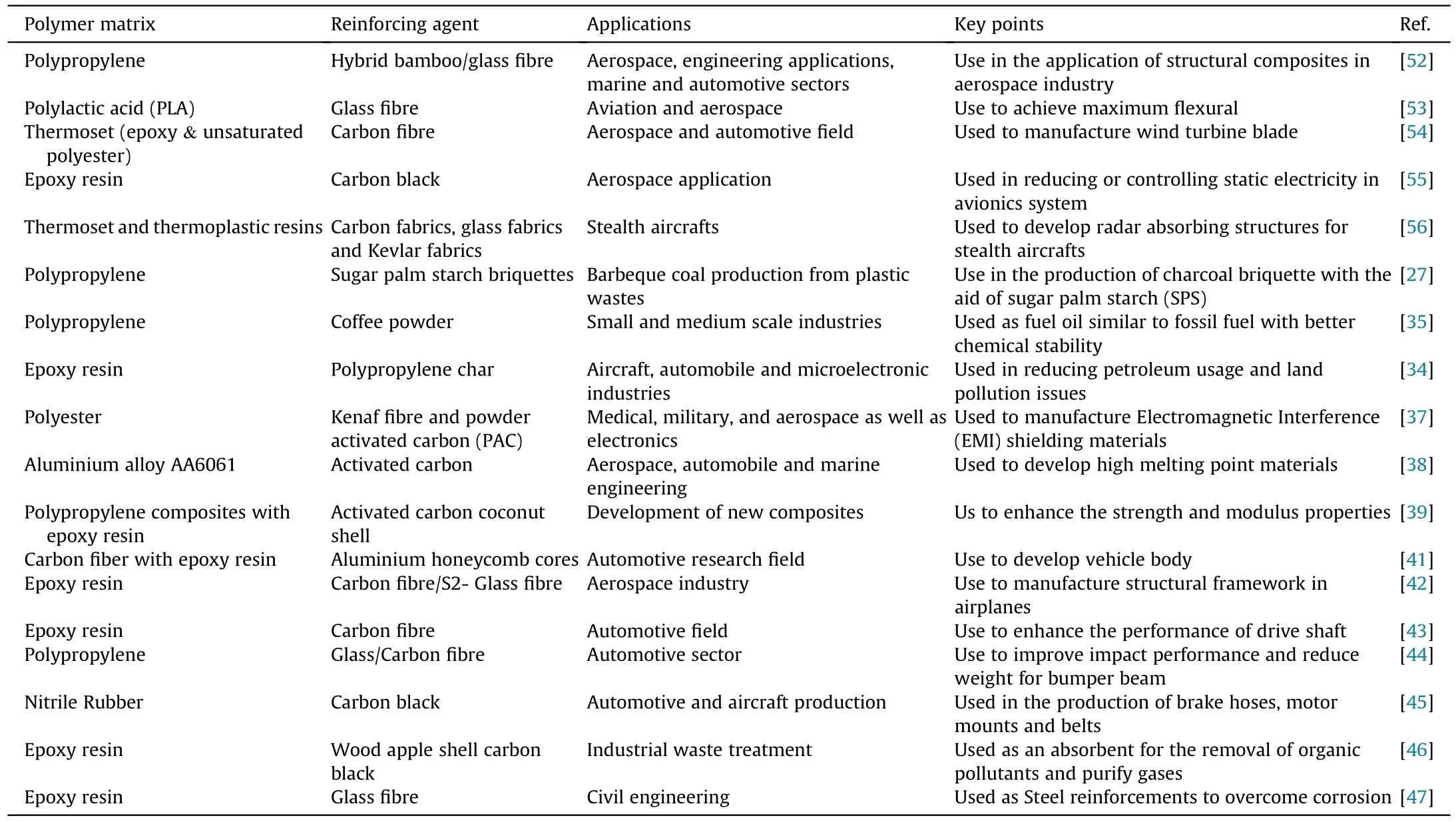
Table 1.Carbon-based materials reinforced composites in defence and other engineering applications.
2.Origin of carbon-based materials
Carbon is a one-of-a-kind and flexible element capable of forming a variety of designs at the nanoscale.Carbon's fundamental qualities have sparked huge interest in a variety of applications,including electrical circuits,radio frequency devices,and sensors.As indicated in Fig.1,there are two types of carbon-based products or carbonaceous materials: (i) classical carbon materials like char,carbon blacks (CB),and activated carbons (AC),and (ii) nanostructured carbons like graphene,graphite,fullerenes,and carbon nanotubes (CNT).Advanced nanotechnologies and gadgets in the field of renewable energy require carbon materials with nanoframeworks [57].Due to their huge specific surface area,high conductivity,high mechanical strength,and good thermal stability,several carbon-based materials have been investigated as main electrode composites,effective adsorbents,and for hydrogen storage.
The first carbonaceous minerals discovered,according to Suri et al.[62],were carbon nano-diamonds in 1961 [63,64].Carbonnano-diamonds have a diameter of around 10 nm and have a diamond crystal structure.Fullerenes [65],commonly known as buckyballs because of their structural resemblance to geodesic domes,were the second carbonaceous minerals to be discovered.Carbon nanotubes (CNTs) [66],which are rolled-up sheets of graphene,were discovered as a result of work on fullerenes.CNTs can be made up of a single sheet (single-walled carbon nanotubes(SWCNTs)) or several sheets (multi-walled carbon nanotubes(MWCNTs),and depending on the orientation of the rolled sheet,they can be semiconducting or metallic.Carbonaceous nanomaterials have such a variety of unique size-dependent attributes,such as good mechanical properties (CNTs are 100 times stronger than steel) [67],as well as electrical and optical properties,which have been utilized in bioengineering applications such as molecular separation,biomolecule delivery and therapeutic imaging.
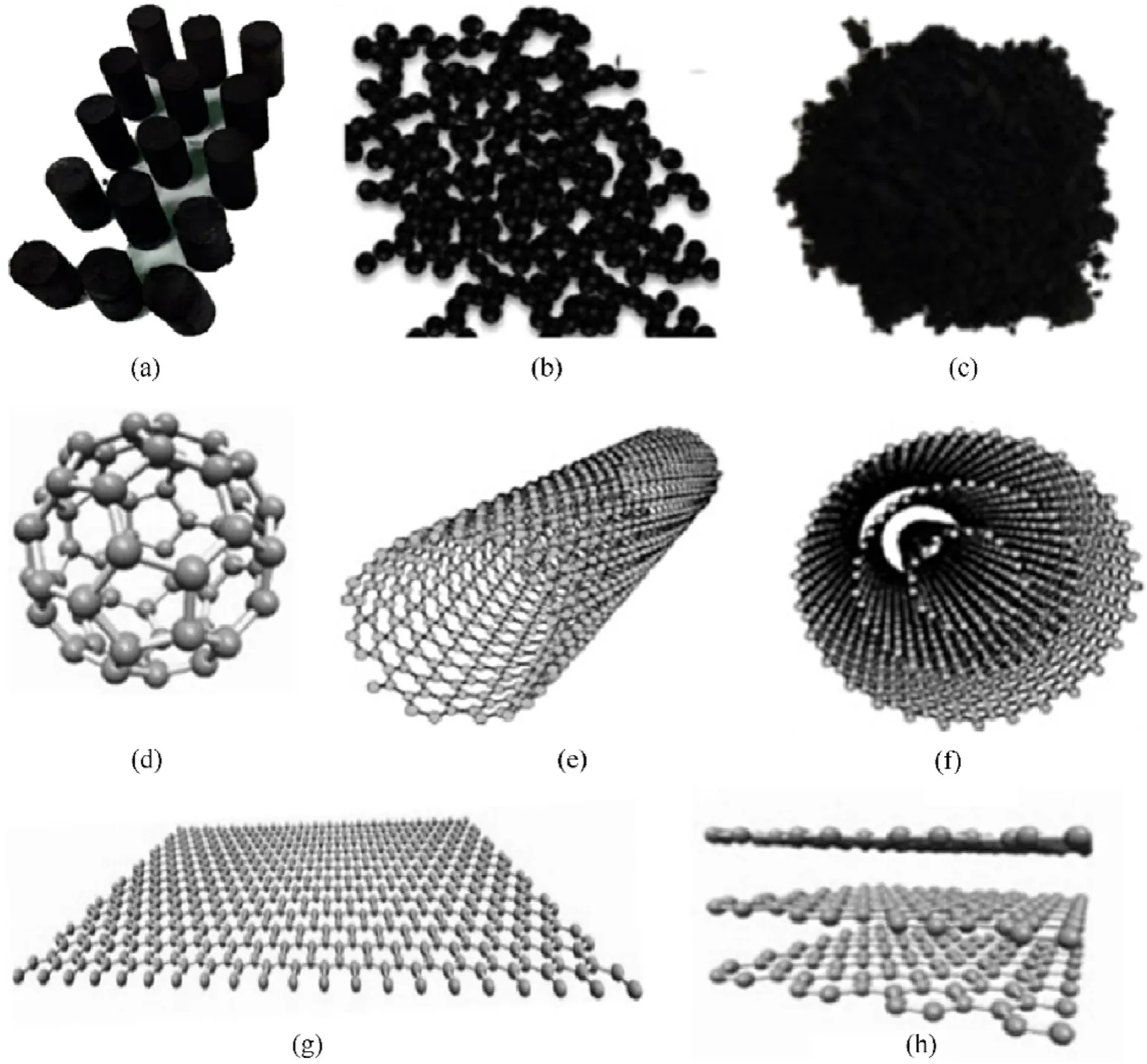
Fig.1.Commonly applied carbon-based materials,including (a)char(compression-moulded [27]),(b)carbon black(CB)(micro-mesopore[58]),(c)activated carbon (AC)[59],(d)fullerene (0D) [60],(e) single-walled CNT (1D) [61],(f) multi-walled CNT (1D) [61],(g) graphene (2D) [60],and (h) graphite (3D) [60].Reproduced with permission from Refs.[58-61].
Carbon-based nanomaterials have long been regarded as the next generation of innovative materials [68].Researchers and industry players are beginning to notice the potential for utilising these materials in novel applications for various military vehicles either in aircrafts,submarine or tanks.Carbon nanotubes also have a wide range of uses in aerospace and defence electronics.It provides superior protection for the cost of a coat of paint and allows you to protect the internals of a carbon fibre-based aircraft.
3.Carbon-based materials productio n
The procedures for producing each carbonaceous substance will be detailed in this part for a better understanding.Carbon-based materials,for example,may be made using a variety of ways [62]:(i) char and CB generation by explosion and thermal breakdown;(ii)laser ablation and arc discharge;(iii)sol-gel technique;and(iv)chemical vapour deposition (CVD),which is commonly utilized to manufacture CNTs and graphene.These processes are similar in that they both heat the carbon precursors to greater temperatures.
3.1.Upcycling of plastic and agricultural waste via thermal decomposition
Upcycling technology was developed primarily on the framework suggested for managing plastic waste in a cost-effective approach.Upcycling commences with the chemical or biological raw materialisation of plastic debris,which is generally known as recycling.Upcycling technology is a step beyond recycling because it enables materials that have approached the end of its lifespan to be recirculated by using the waste as feedstocks in bioenergy technologies.Consequently,non-biodegradable polymers are valorized or upcycled into high-value chemicals,monomers,polymers,and fuels,resulting in resource circularity [69].By turning recovered raw materials into value-added commodities,upcycling technology makes it economically feasible to recycle plastic trash and helps to reduce plastic waste build-up.As a result,if non-degradable biopolymers can be upcycled,they may be classified as “sustainable biopolymers” with resource circularity,meaning they won't be discarded and won't accumulate in the environment[70].
Pyrolysis is a thermochemical decomposition mechanism that occurs at elevated temperatures in a deoxygenated,inert environment.As per Xue et al.[71],pyrolysis is a practical and efficient waste treatment approach for the disposal of factory and pharmaceutical waste material,as well as a feasible and practicable substitute thermal disinfection technology for COVID-19-related waste.The waste pyrolysis plant's final products are frequently combustible lower molecular weight,and less complex particles due to the heat and/or pressure applied [72].The gathered gases,such as hydrogen,methane,and carbon monoxide,will usually result in a gaseous end-product.At high operating temperatures,liquid outputs will be gathered the most.Methanol,acetone,acetic acid,acetaldehyde,tar,solvent oil,and other organic compounds are among the liquid-like end products[73].Apart from that,lowtemperature pyrolysis is the most common way to obtain solid endproducts.As a result,coke,char,and carbon black will be accumulated [69].Fig.2 depicts the many forms of pyrolysis that have been used to convert plastic and agricultural waste into char.
Plastic waste decomposes into organic components with a lower molecular weight at this phase.Solids,and a range of volatile oil and gas products,will make up the end-products in general.Furthermore,the product outputs are influenced by the physical and chemical characteristics of the waste,as well as other pyrolysis factors including such pyrolysis temperature,heating rate,and residence time.Pyrolysis emits very few pollutants.Pyrolysis has also been demonstrated in previous research to convert a high percentage of trash into a range of useful goods.As a result,it will be beneficial for converting plastic waste into marketable goods[27].
3.2.Arc discharge and laser ablation
As demonstrated in Fig.3,laser ablation operates on the same principle as arc discharge.The furnace employs a pulsed laser as a heat source to provide heat.When this method is utilized,a lot of carbon vapour is released from the graphite.The flowing gas transports carbon vapour and argon.The arc discharge technique uses graphite electrodes to carry direct current under inert argon at low pressure.Fullerenes and CNTs are made using arc discharge[66,76] and laser ablation [65,77].Each approach generates a carbon gas cloud by sending current through graphitic electrodes(arc discharge) or heating solid carbon substrates with lasers (laser ablation) [78],with temperatures ranging from 3000 to 4000C.Carbonaceous nanostructures are formed when gaseous carbon condenses.To regulate the shape of the resulting nanostructures,this process is frequently carried out in the presence of a catalyst,such as cobalt,yttrium,or nickel.The identity and pressure of the gas separating the electrodes,as well as the current strength,are critical factors for arc discharge.CNT creation is favoured by high gas pressure and low current,whereas fullerene formation is favoured by lower gas pressure.Laser ablation frequently creates a combination of desired and undesirable particles.To separate desirable materials,separation methods such as reflux in nitric acid have been devised [79].

Fig.2.Schematic illustrations of various types of pyrolysis reactor,including(a)rotary kiln reactor[74],(b)conical spouted bed reactor[75],and(c)catalyst-assisted fluidized bed reactor [69].

Fig.3.Experimental setup of (a) arc discharge and (b) laser ablation for CNTs production [77,80].
3.3.Chemical vapour depositions (CVD)
Simultaneously,carbon nano-diamonds [81] and carbon nanotubes (CNTs) [82] have been created using chemical vapour deposition (CVD) (see Fig.4).The CVD process produces films rather than freestanding particles for nano-diamond[78].In this process,hydrocarbons are formed in the presence of metal catalysts at temperatures ranging from 500 to 1000C.The hydrocarbons deteriorate at this temperature,leads to the creation of CNTs when the solution cools.These molecules act as nucleation centres for new particle formation.The reaction occurs at temperatures much below those of arc discharge or laser ablation (for example,about 1000C).The materials generated can be purified using an acid treatment.The CVD process is the most commonly employed in the production of carbon nanotubes in industry.Hot-wire (HWCVD)[83],hot-filament (HFCVD) [84],microwave plasma-enhanced(MWCVD) [85],oxygen-assisted (OCVD) [86],aerosol-assisted(ACVD) [87],and liquid-injection (LICVD) [88] are examples of CVD procedures for the manufacturing of CNTs [26].

Fig.4.Schematic CVD setup [89].
4.Carbon reinforced composites and its stability in defence technology
The application of composites in military was introduced since 2000.Boeing 787 Dreamliner,for example,was debuted in 2007 and used around 50% composite materials.High mechanical strength,low in weight,elevated impact resistance and high durability,adequate fatigue performance,multi-functionality,and simple design and manufacturing approaches are anticipated to occur from the substantial boost in the utilization of composite materials based on thermoplastic and thermoset matrix.Advanced composites,according to Rana and Fangueiro [90],are classified into a variety of applications based on demands,structure,and manufacturing method,as shown in Table 2.Jones [91] distinguishes three categories of composite materials based on matrix constituents: polymer-matrix composites (PMC),metal-matrix composites (MMC),ceramic-matrix composites (CMC) and carbon-matrix composites (CAMC).In fabrication of advanced composites or nanocomposites,the choice of matrix and reinforcements becomes a crucial process constraint when designing a composite for a specific application [55].

Table 2.Advanced composites and its properties[55].
Carbonaceous materials are one of the mostly utilized fillers in advanced composites or polymer-matrix composites(PMC)as well as in ceramic-matrix composites (CMC) [92].It is due to its low density,extensive creation of electrical conductive networks,and excellent resistance to oxidation.Plus,carbon nanostructures'intriguing properties,such as high tensile strength,lightweight,high flexibility,and outstanding thermal and electrical conductivity,offer promise for EMI shielding [93],supercapacitor [94] and various aeronautic applications [95].Another major type of composite which incorporating with carbon materials is carbon-matrix composites(CAMC),which composed of carbon materials,such as char,coke,sintered carbon,carbon fibre and graphite,as the matrix phases.These materials exhibit magnificent thermal and mechanical stability which make it as the best possible alternatives for improved aviation brakes [96],construction materials [97] and automotive parts [98].Reinforced carbon-carbon (RCC) is a composite material made up of carbon fibres embedded in a graphite matrix,which is commonly coated with silicon carbide to prevent oxidation[68].It was designed for the space shuttle's nose cone and leading edges,as well as the nose cones of intercontinental ballistic missiles.Because of its extraordinary qualities,such as superior electrical and mechanical stability,simple processability,low density,and so on,carbon reinforced composite materials and C/C composites are seen as more appealing and acceptable.
5.Recent application of carbon-based composites
Metals have a substantially lower strength-to-weight ratio than composite materials:By as much as 20% better in some cases[144].Thus,composite materials are the great potential for engineering material in various sectors including,aeronautics,automotive,maritime,electrical and in structures.Via research works in composites,various required properties in a controlled considerable extent by the choice of fillers and matrix.Recently,many researchers have been focusing in utilising carbon materials in engineering applications.Table 3 above shows the summary of the recent development of carbon-reinforced composites in defence technology.
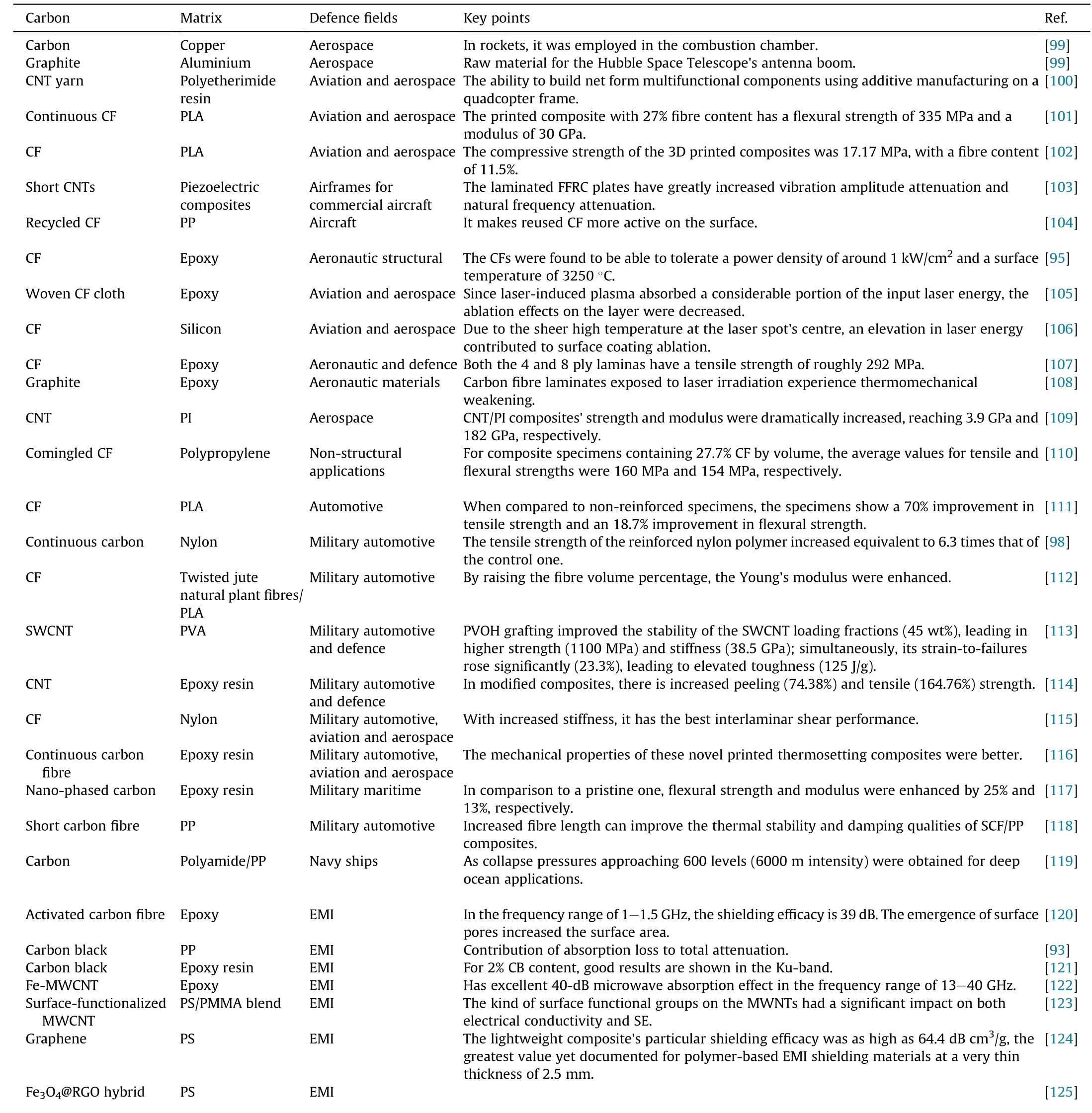
Table 3.Current applications of carbon-based composites in defence fields.
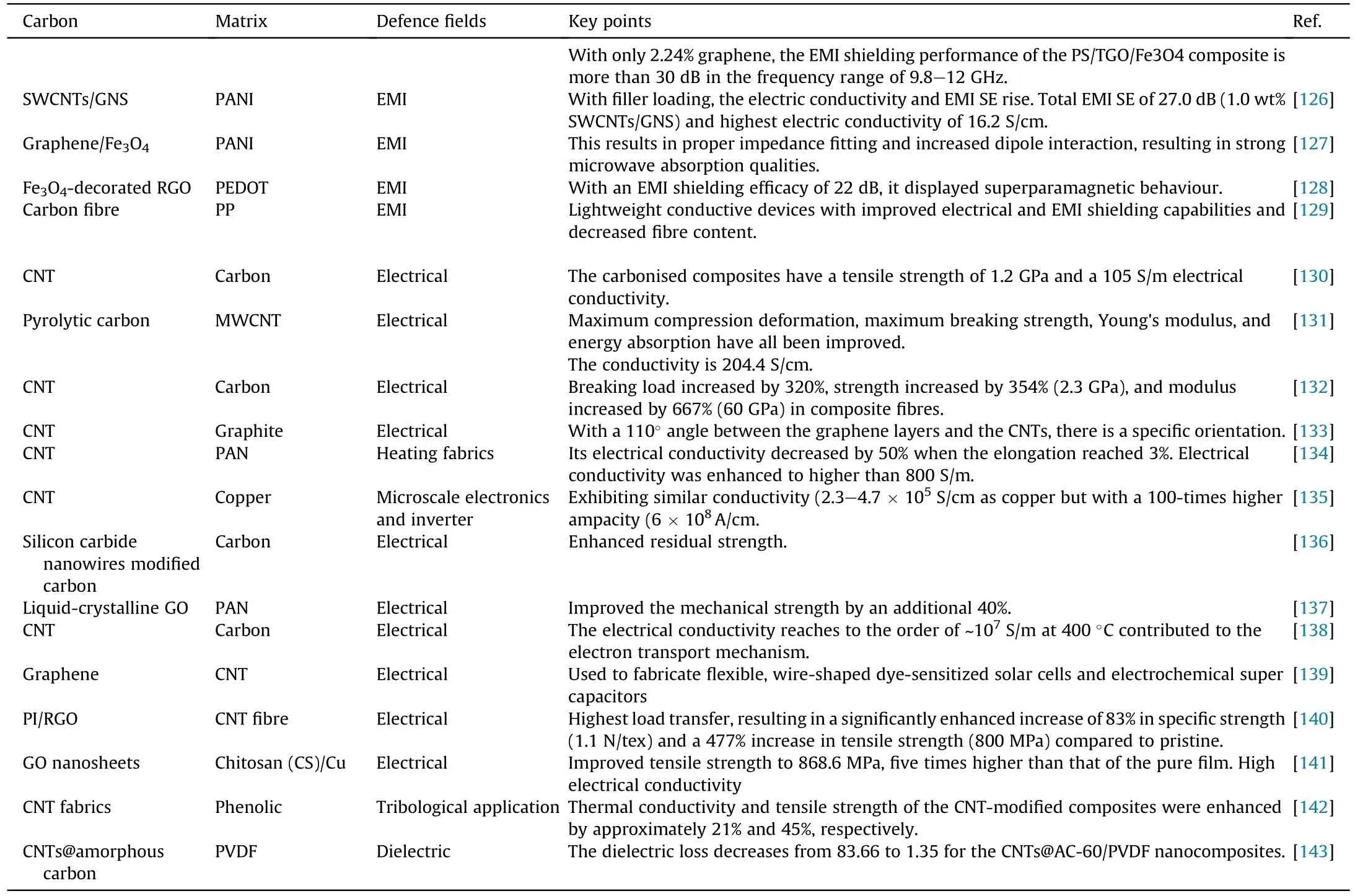
Table 3.(continued)
5.1.Carbon-based composites in military aircrafts
In aerospace applications,CF is the broadly used composite fibre.This is due to the fact that carbon reinforced composites exhibit lower weight with improved strength-to-weight ratio,consequences in lesser fuel uses and emissions [144].Plus,composites with less riveted joints,improved aerodynamic efficiencies and reduces the costs manufacturing,naturally,attracted researchers to apply it in military aircraft manufacturing to enhance the mobility and speed of their products.Further,when it comes toheavier-than-air machinery,weight is essential,and researchers have been working to increase lift-to-weight ratios since man first went to the skies.
Composite materials contributed a lot to reduce weight,and presently there are three primary forms: carbon fibre,glass,and aramid-reinforced epoxy.Others include boron-reinforced (which is a composite with a tungsten core)[144].Composites are utilized in many types of aircraft and spacecraft,from hot air gondolas and gliders to passenger jets and military planes,for both structural and component purposes.
The unidirectionally reinforced carbon-carbon composites with various fibre orientations for aerospace applications such as heat shields in re-entry vehicles,rocket motor nozzles,and high friction parts in aircrafts are used[96],as shown in Fig.5.In different study,carbon-ceramic material was used as raw materials in manufacturing combustion chamber of rockets (Fig.6) [145].Carbon nanotube (CNT) yarn reinforced polyetherimide resin composites were utilized in aviation and aerospace as shown in Fig.7.The potential to produce net shape fabricated multifunctional components using additively manufacturing a quadcopter frame[100].
In addition,works on continuous CF reinforced PLA had been done by Tian's team [101].They discovered that when the fibres included up to 27%,the specimens of printed composite had a modulus of 30 GPa and bending strength of 335 MPa (see Fig.8)[101].For the 3D printed CFRCLSs a compressive strength of 17.17 MPa was obtained by a fibre material of 11.5%,CF PLA.To exhibit procedure efficiency,a heterogeneous lightweight sandwich structure sample was produced [102].
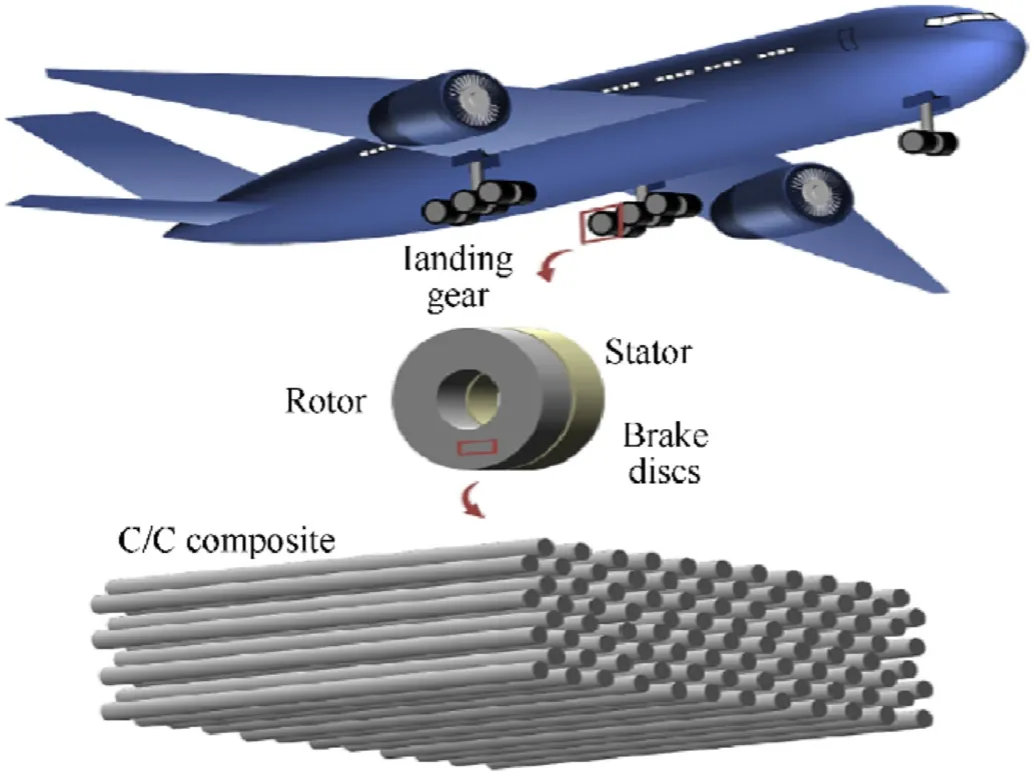
Fig.5.Brake discs of aircraft landing gears made with carbon composite material[96].
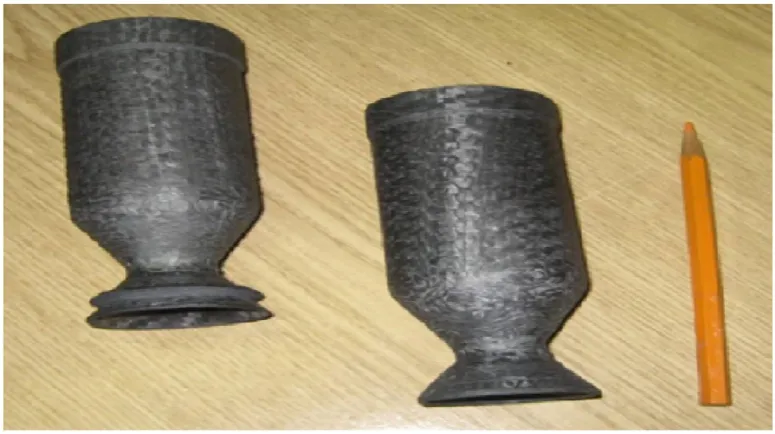
Fig.6.Work material of ceramic combustion chamber [145].
Short carbon nanotube airframes for commercial aircraft(CNTs)The attenuation of amplitude of vibrations and natural frequencies of laminated fuzzy fibre reinforced composite (FFRC) plates is greatly enhanced when the plane of radially developed wavy CNTs on the circumferential surface of carbon fibre is coplanar with the plane of carbon fibre axis,compared to FFRC plates containing straight CNTs or wavy CNTs coplanar with the transverse plane of CF [103].
Recycled carbon fibres (CF) reinforced polyphenylene sulphide(PPS) composites show enhanced surface activity.These features may significantly alleviate the disadvantages of recycled CF by restoring chemical and mechanical properties to those of new CFRP[104].Recycled CF/PPS/resin the mechanical characteristics of the recycled CF reinforced PPS composites were similar to those of corresponding compounds made using manufacturing grades of short new carbon fibre [146],as shown in Fig.9.
In another study by Lacroix et al.[95],CF/epoxy composites have been investigated and show great features to be applied in aeronautic structural components.In an experimental study the carbon fibres shown to be able to sustain around 1 kW/cmof power density having a exterior temperature of 3250C [95].Wu et al.[105] had worked on woven CF cloth/epoxy composites.As laserinduced plasma absorbed a significant portion of the incident laser energy as air failure arisen after the surface CF fabric evaporated locally,the ablation effects on the under-epoxy laminate closely attached to the top CF were decreased.Interaction of a CF/epoxy composite laminate with an infrared wave laser,as well as interlaminar damage to a CFRP laminate exposed to continuous laser irradiation.Laser-induced stress waves in the aerospace and defence industries might create on-axis tension,resulting in delamination of the CF/epoxy specimens,as shown in Fig.10.At roughly 292 MPa,the tensile strength of both the 4 and 8 ply lamina was observed to be increased [107].
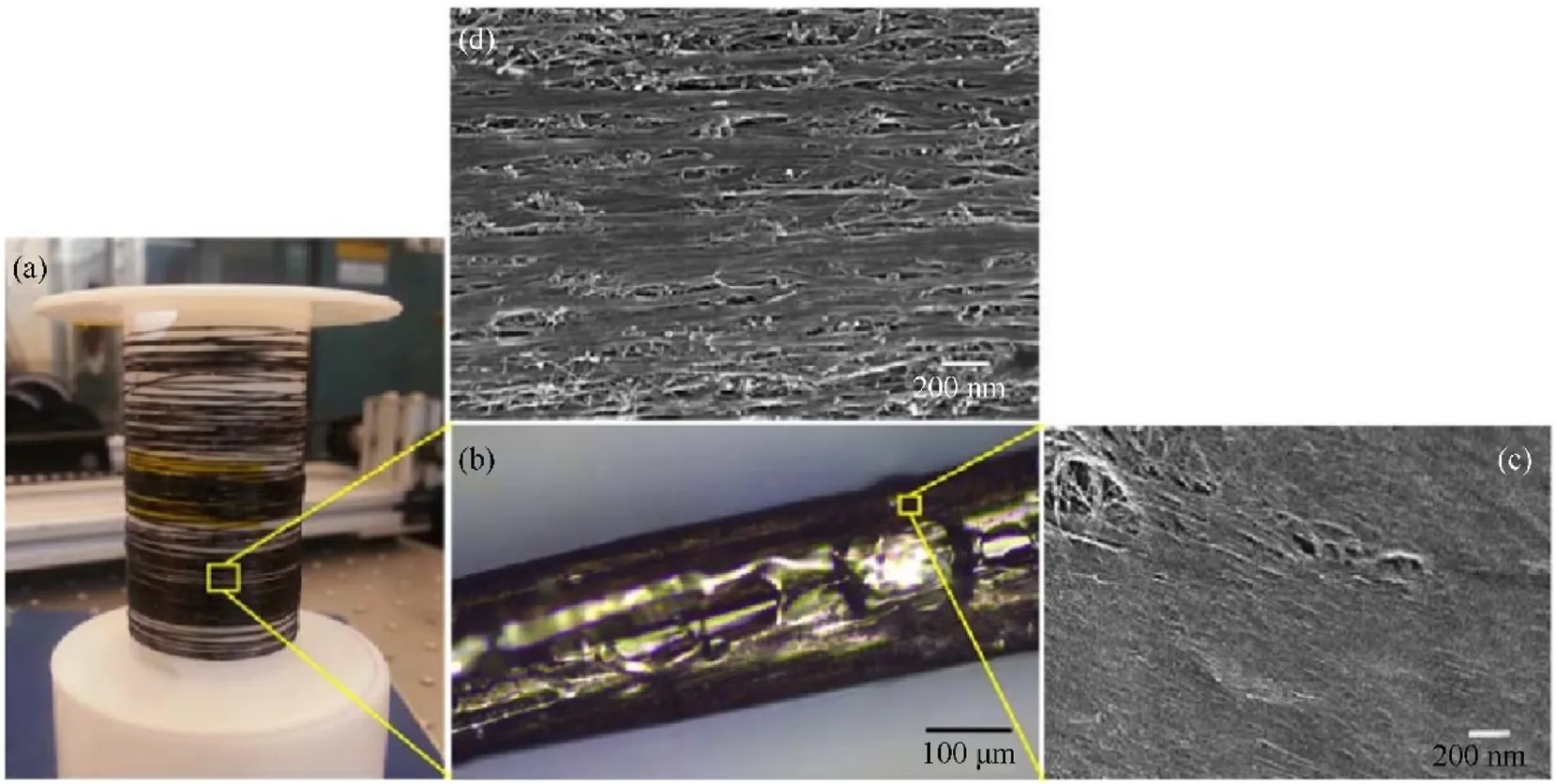
Fig.7.CNT yarn filament at before printing.
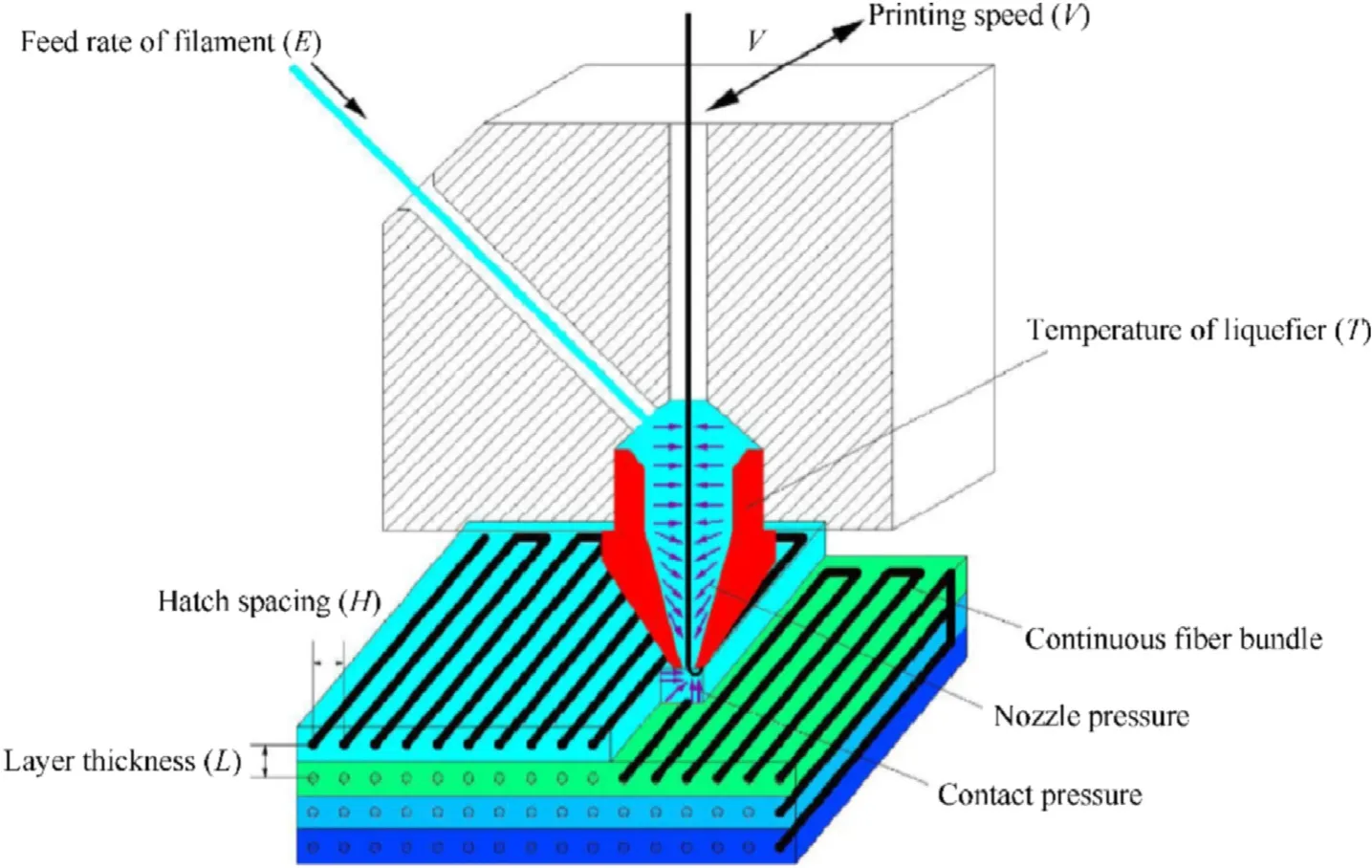
Fig.8.Schematic of process parameters for 3D printing of CFR PLA composite [101].
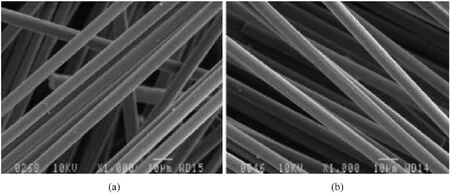
Fig.9.(a) Recycled CF from prepregs;and (b) Recycled CF from finished parts [146].
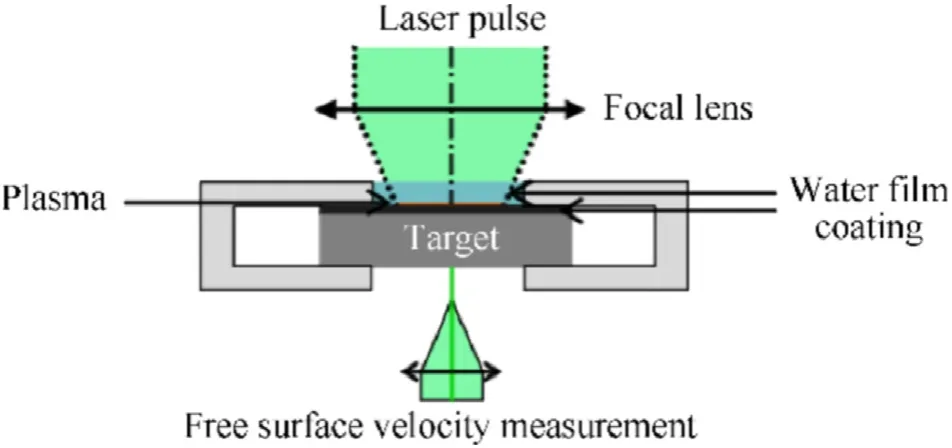
Fig.10.Experimental set-up for CF/epoxy specimens [107].
Graphite/epoxy composites shows thermo-mechanical weakening when subjected to a laser irradiation[108].Whereas,Xinlong et al.[147] has investigated the mechanical strength of graphite fibre/epoxy laminates.As the irradiation period increased,the maximum tensile stress the laminate could sustain dropped,and the rate of decline was proportional to the laser irradiation intensity.The CF was not fractured at 1.0 kW/cm,hence it was able to carry the most of the loads [147].
Materials with a high degree of toughness and inertness,such as carbon-carbon materials,are widely used in aerospace applications because of their extraordinary characteristics,which include maintaining their mechanical and physical properties at extremely high temperatures and having a high degree of toughness and inertness.However,there are several disadvantages to carboncarbon materials,including high costs and limited efficiency of the fabrication processes,which is exacerbated by their high sensitivity to oxidation at very lower temperatures.
5.2.The use of carbon-based composites in maritime-naval ships and submarines
While composite materials are now being researched for a wide range of maritime applications,they were previously only used in a limited non-critical ship structures and small boats [148].After WWII,composites were used for the first time in the manufacturing of small crew boats for the United States Marine Corps.Between both the 1940s and the 1960s,these boats proved to be stiff,sturdy,durable,and easy to repair,and these characteristics led to the rapid adoption of composite materials in other types of US Navy equipment.
The existing and future usage of composites in superstructures,floors,walls,advanced mast systems,propellors,propulsion shafts,wheels,pipelines,pumps,stopcocks,equipment,and other machinery aboard big war vessel such as frigates,destroyers,and aircraft carriers are also discussed.Various research has been done in modifying composites to the extent of maritime applications.For example,a work by Hossain et al.[117] on nano-phased carbon epoxy resin for military maritime applications.It is found that the composite exhibits increased modulus and bending strength by 12.51% and 25%,respectively,compared to the neat one.According to Fig.11,no significant decrease in the strength and modulus was observed after the 30-day exposure to seawater,[117].Short carbon fibre reinforced PP composites has shown great thermal stability of SCF/PP composites and improve the damping properties along with the increase in fibre length[118].Arhant et al.[119]has discovered that carbon polyamide/PP composites exhibit distinct properties to be applied as structural materials in navy ships (see Fig.12).It is observed that the composites have high mechanical strength with its collapse pressures approaching 600 levels (6000 m intensity)suits for deep ocean applications.
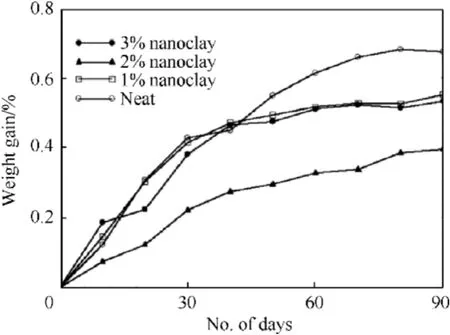
Fig.11.Moisture absorption behaviour of neat and nanophased carbon/epoxy composites [117].
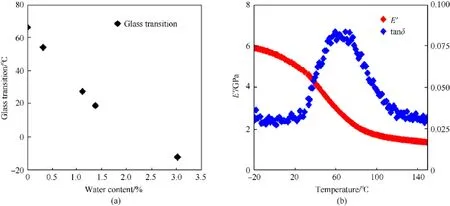
Fig.12.(a) Reduction in glass transition temperature in C/PA6 samples soaked at various humid circumstances and (b) dry state [119].
With reference to the application of fibre reinforced composite materials in the marine sector,this part provided a review of the current level of knowledge.The construction of boats and ships were the primary industries highlighted.In the boat and ship construction industry,composite materials are used for ships,and submarines to produce components like as masts,propellers,and internal elements of ships and submarines.Despite the fact that the usage of composite materials in the naval industry was first introduced in the 1950s and has seen a significant increase in recent decades,metals continue to be the primary solution in a wide range of applications.Indeed,ship designers have a great deal of confidence and expertise working with metals,which allows them to achieve exceptional results in a variety of applications with carbon composite materials.
5.3.Carbonaceous materials in composite for automotive components
Nowadays,carbon-based materials had been utilized in various automotive application including in military and sports vehicles.Thus,various researchers had discovered their distinct properties for the desired sectors.For example,Yao et al.[111]has discovered the application of CF/PLA composites as materials for car components,shown in Fig.13.When compared to non-reinforced specimens,carbon fibre reinforced specimens show a 70% increase in tensile strength and an 18.7% increase in flexural strength.The slope of the fractional change in electric resistance with strain was found to be a reliable predictor of strain measurement in the elastic area and damage detection in the yield region.Plus,the composites were lightweight [111].
According to researchers,continuous carbon/Kevlar/glass fibre composites exhibited superior mechanical strength in military automobile.Furthermore,the tensile strength values obtained with the addition of nylon were up to 6.3 times greater than those obtained with the non-reinforced nylon polymer.In glass specimens,the maximum efficiency in tensile strength was seen when the fibre content neared 22.5%,and larger fibre concentrations resulted in higher tensile strength(up to 33%),yielding only minor increases in strength [98] (see Fig.14).Whereas,in another study from Matsuzaki et al.[112],works had been done with CF/twisted jute fibres/PLA composites.The 3D printed composites exhibit enhanced Young's modulus as the fibre volume fraction increased,thus,the performance of the composites improved.
Recently,CNT has been utilized as reinforcing agent in composites.Several works had been done.Marriam et al.[114]/epoxy resin composites synergistically created a new CNT-to-CNT interphase and interlocked interactions,hence,offering improved tensile strength(164.76%)and peeling(74.38%)in modified composites[114].CF Nylon Military automotive,aviation and aerospace 3D printed.exhibited the best interlaminar shear performance with higher stiffness [115].
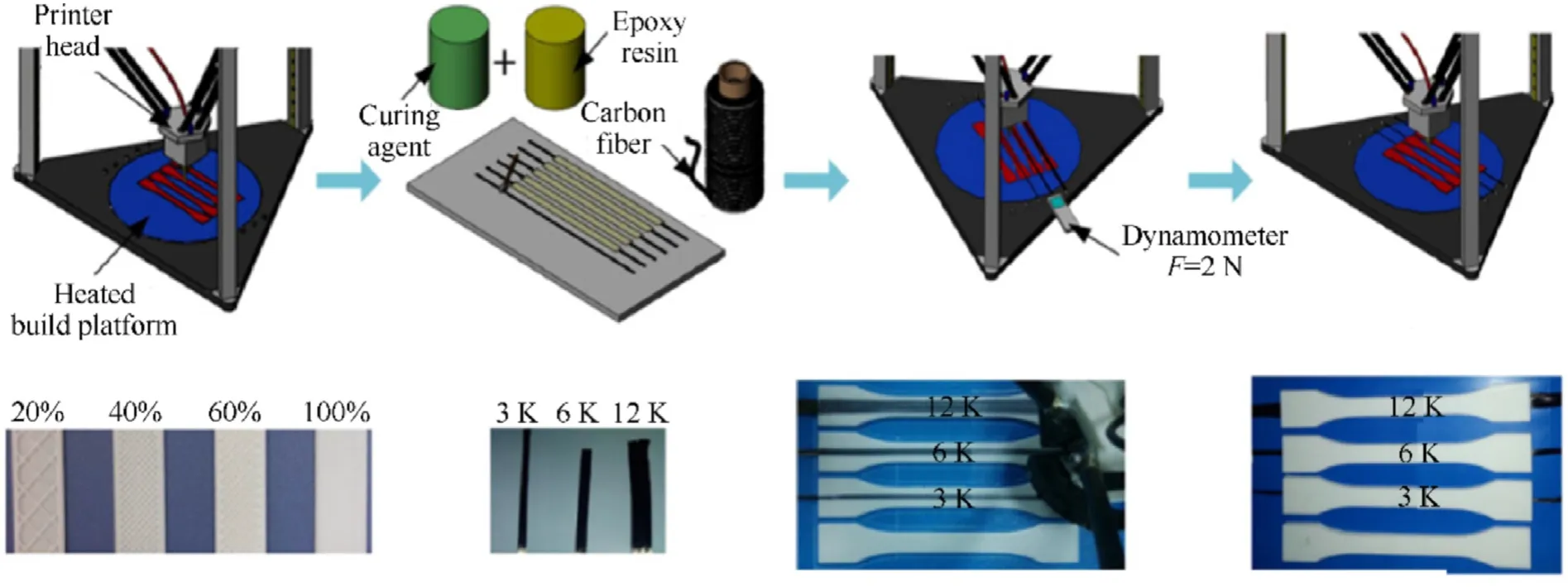
Fig.13.Fabrication process of CF PLA [111].
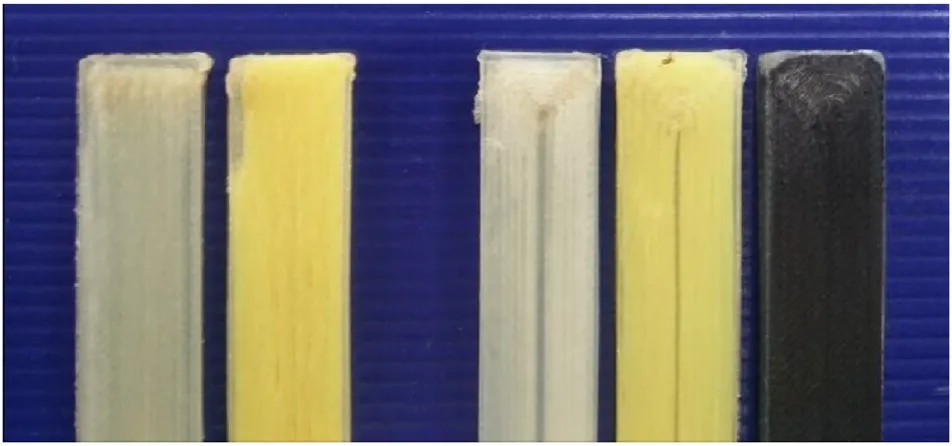
Fig.14.Examples of fibre reinforcement patterns used in the study [98].
The purpose of this analysis is to provide an overview of the developments made in carbon fibre material technology in the military automobile sector,as well as the vast range of applications that have been developed.Some of the most recent initiatives and advancements,on the other hand,are covered in greater depth.Despite this,ongoing research in the areas of mass production,manufacturing costs,joining technologies,developments,and additional research in the military automotive industry is necessary to overcome some of the current challenges and limitations that are required in industrial applications to be successful.
5.4.Utilization of carbon composites in military electronic devices
Electronic noise,electromagnetic (EM) waves or radiations,electromagnetic interference (EMI),and radiofrequency interference (RFI) are all examples of unique forms of electronic pollution in the environment as a result of rapid advancements in information technology and a significant increase in the use of electrical and electronic devices [144].
CNT fibres produced by floating catalytic chemical vapour deposition were penetrated by polyacrylonitrile (PAN) solution,according to Li et al.[132].When compared to pure CNT fibres,such composite fibres had almost 300% increase in breaking load,350% improve in strength,and approximately 700% increase in modulus.Furthermore,composite fibres of this type have low densities(1.48 g/cm)and high flexibility and durability.As mentioned by Jia et al.[138],the electrical conductivity of the aligned CNT/C composites is 3.2×106 Smin room temperature and shows a positive temperature dependence as a function of the measuring temperature,and the conductivity reaches to the order of~107 Smat 400C.This happened as contributed to the electron transport mechanism between the CNT bundles and the PyC matrix[138].In another study,Han et al.[130]investigated CNT/carbon composites,discovering that CNT alignment controlled both mechanical and conducting performances of cured(stabilised)and carbonised CNT/C composites,whereas carbon matrix alignment dominated graphitized CNT/C composites.Carbonised composites may have tensile strengths of up to 2 GPa,while graphitized samples had electrical conductivities of up to 100 S/m.
Chien et al.[134] has successfully introduced CNT/PAN as heating fabrics.These fibres could also respond to stretching,and the electrical conductivity decreased by 50% when the elongation reached 3%.conductivity was enhanced to higher than 800 S/m[134].Whereas Subramaniam et al.[135] has investigate the application of CNT/Copper as microscale electronics and inverter,exhibiting similar conductivity (2.3-4.7 × 10S/cm) as copper(5.8×10S/cm),but with a 100-times higher ampacity(6×10A/cm).From this research,the incorporation of CNT as carbon nanomaterials has improved the electrical properties of the materials.In a study by Shen et al.[136],silicon carbide nanowires modified carbon exhibits enhanced residual strength of the composites is realized by the shielding of main crack tip and deflection of the main crack due to the appearance of subcritical cracks [136].
Graphene CNT used to fabricate flexible,wire-shaped dyesensitized solar cells and electrochemical super capacitors [139].Nam's team [140] has investigated the application of PI/RGO CNT fibre for electrical sector.When compared to pure CNT fibres,the PI infiltrated CNT fibres had the highest load transfer,yielding in an 85% improvement in specific strength properties (1.1 N/tex) and a 500% boost in tensile strength (800 MPa).Additionally,compared to pristine CNT fibres,the photonic sintered PI/RGO/CNT fibres enhanced electrical conductivity by almost 200% (5.5103 S/cm)with compromising mechanical features [140].Fig.15 shows schematic illustrations of(a)a pristine CNT fibre,(b)a PI infiltrated CNT bundle,(c)photonic sintering of PI/GO/CNT fibre,and FE-SEM picture of a GO particle on a SiOsurface.
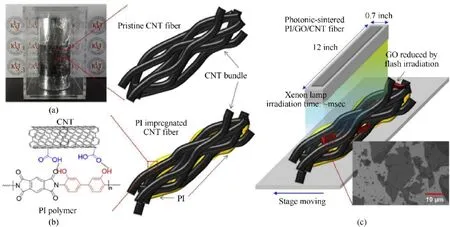
Fig.15.The polymer impregnation and immediate flash irradiation processes for directly spun CNT fibres [140].
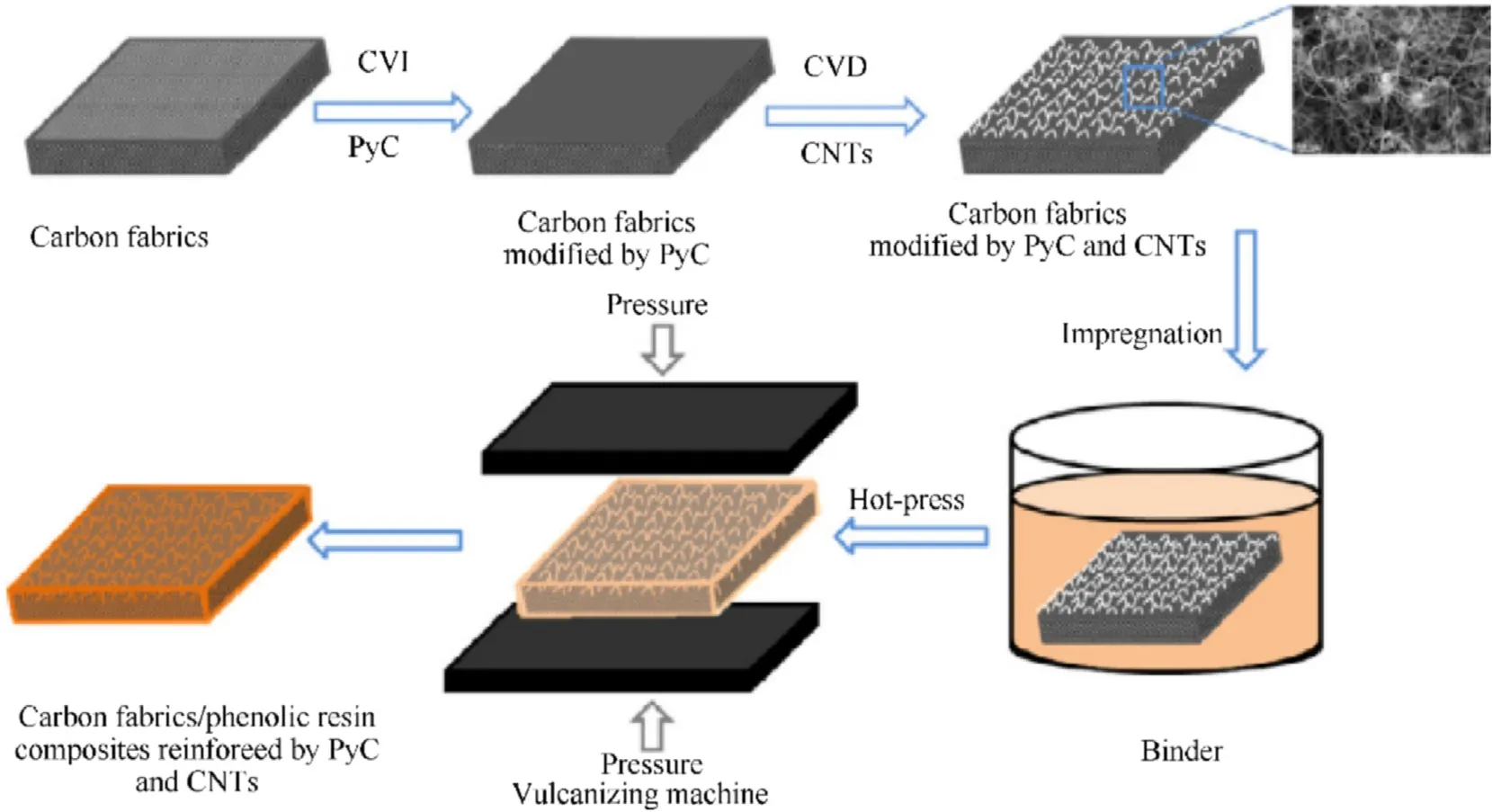
Fig.16.Illustration of the procedure to fabricate carbon fabric/phenolic composites reinforced by CNTs [142].
The inclusion of GO nanosheets to a chitosan (CS)/Cu thin film increases the tensile strength to an increased 900 MPa,four times higher than that of the pure film.The strong electrical conductivity is an added bonus [141].Plus,a nacre-mimetic graphene/PVA composite sheet that is robust(approximately to 151 MPa),stiff(up to 9 MJ/m),and extremely stretchy (up to 10.44%) [149].In tribological application,Wang et al.[142] has introduced CNT/phenolic fabrics,illustrated in Fig.16,to be applied as protection fabric.Due to the excellent thermal conductivity of CNTs and better interfacial adhesion between carbon textiles and resin matrix,the thermal conductivity and tensile strength of the CNT-modified composites were increased by roughly 21% and 45%,respectively[142].
5.5.Carbon composites in electromagnetic interference (EMI)shielding for military
EMI shielding is a phenomenon that encompasses the reflection and/or absorption of electromagnetic waves by a substance,which offers protection to prevent serious electromagnetic radiation from penetrating electronic equipment.The significance of EMI shielding components is seen in Fig.17.High-frequency EM waves such as microwave (MW) and radiofrequency (RF) waves are now being emitted everywhere as a result of the rapid expansion and parabolic rise in the use of electronic devices.These undesired EM waves emitted by electronic equipment can couple and interfere with the proper operation of surrounding electronic devices,which is known as EMI.To put it another way,EMI,a sort of electronic disturbance or noise created by EM waves,interferes with,impairs,and/or impedes the efficient operation of electronic devices inside the region[144].
Due to their low cost,strong corrosion resistance,lightweight,simple,and outstanding processability,and broad absorption and bandwidth capabilities,conductive polymer composites (CPCs)have lately become popular as EMI shielding materials in comparison to traditional metal-based materials.CPCs are widely used in chemical engineering,energy sources,and,most importantly,electronics,because to their ease of processing and wide spectrum of electrical conductivity.CPC performance is influenced by the kind,concentration,shape,and dispersion of the conductive filler.Thus,in the military and civic sectors,EMI shielding is one of the most effective ways for preserving the environment and the health of living beings from the destructive effects of EM waves [144].
Carbon black as well as short CF have high EMI shielding properties,especially in the X-band,in which there is inconsistent fluctuation in the reflection loss owing to the existence of gaps in the conductive mesh [150].To provide excellent EMI shielding,carbon black/glass/epoxy composites have an optimised multilayer architecture of radar absorbent structure (RAS) which can withstand stresses while also absorbing electromagnetic waves [151].Further study by Jan et al.[121]found that carbon black reinforced epoxy resin had strong EMI shielding properties(see Fig.18).In the frequency spectrum of 1-1.5 GHz,activated carbon fibre/epoxy composite materials have a shielding efficacy of 39 dB.Activation of the carbon fibre surface with utilising a chemical process is significant to enhance the surface area by forming surface pores[120].

Fig.17.Pictorial depiction of the role of EMI shielding materials in(a)shielding the EM radiating source from the environments and(b)shielding the electronic devices from the EM radiating source.
CNF introduction in graphene improved the shielding effect within the composite network,due to the presence of heterojunction of CNF-GN-CNF[152].The SE-to-density ratio was about 250 dB/(g/cm).CNF/polysulphone nanocomposites were studied by Nayak et al.[153].Fig.19 shows that the EMI SE of nanocomposites with a thickness of 1 mm was 19-45 dB(dB)at 3-10 wt% CNFs loading.The electrical conductivity of nanocomposite was determined using a power law model of percolation theory with a percolation threshold of φc=0.0079 vol%(0.9 wt%)and exponent t=1.73 [153].
The SWCNT/epoxy composites conductivity thresholds are relatively low (approximately 0.062%).In the X-band range,a 20-30 dB EMI SE was reported for 15% SWCNT loading,indicating that the composites might be used as effective lightweight EMI shielding materials[154].According to another study,the EMI-SE of CF/PP/CNT composites increased when mixing speed increased owing to the function of fibre length.The enhanced CF dispersion of the composites was most likely to be responsible [155].Whereas,high shielding is attributed to the high electrical conductivity achieved[156].PLLA-MWCNT nanocomposite foams(Fig.20)were originally used as an EMI shielding material.These composites have a low density (0.3 g/cm),a thin thickness (2.5 mm),a high compressive strength(54 MPa,and a high conductivity(3.4 S/m).It has high-performance EMI shielding with remarkable efficacy and average specific EMI SEs of 23 dB and 77 dB cm/g in the studied Xband frequency region,as well as decreased reflection [157].
In these surface-functionalized PS/PMMA nanocomposites,the kind of surface functional groups on the MWCNTs altered both electrical conductivity and SE [123].Based on Mahmoodi et al.[158],the EMI SE decreased as the alignment of the injection moulded MWCNTs in the PS matrix improved.According to this study,mould designs and processing conditions have a significant influence on electrical conductivity and shielding behaviour.In the X-band(8.2-12.4 GHz),which is dominated by absorption,adding 15 wt% MWCNTs in the PC matrix resulted in a SE of more than 27 dB (see Fig.21) [159].
The shielding efficiency of the lightweight graphene/PS composite was as high as 64.4 dB cm/g,which is the best value yet recorded for polymer-based EMI shielding materials at such a small thickness (2.5 mm) [124].Another study found that the PANI composite with 5.0 wt% Ag@graphene had the greatest electrical conductivity of 20.32 S/cm and the highest EMI SE of 29.33 dB.The presence of metal nanoparticles on the graphene surface and between graphene layers,as well as the uniform dispersion of fillers,significantly increased the creation of conductive pathways in the PANI matrix [160].

Fig.18.Dielectric constant (a)dielectric loss and (b) behaviour with respect to frequency [121].
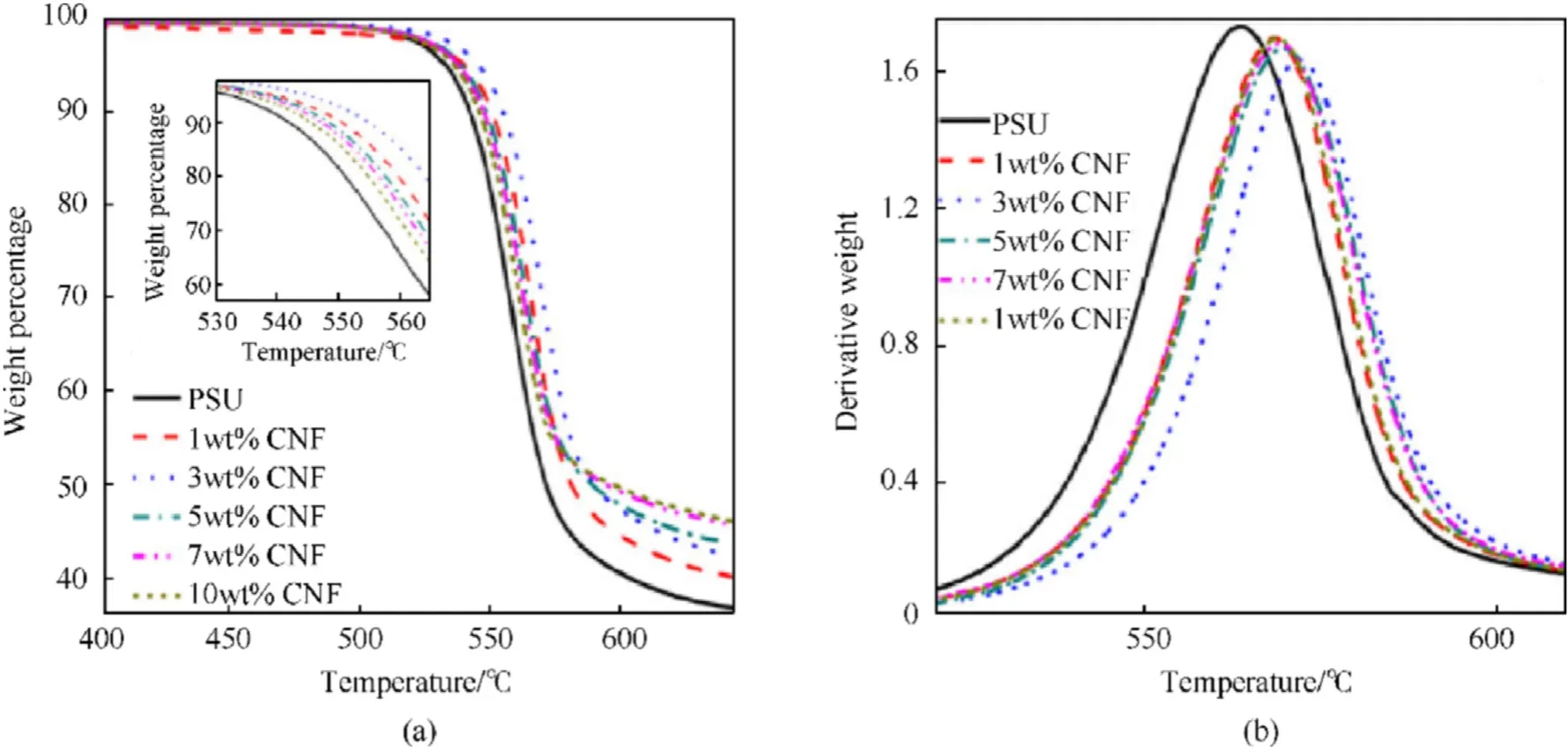
Fig.19.(a) TGA curves of PSU/CNFs nanocomposites and (b) DTG curves of PSU/CNFs nanocomposites [153].
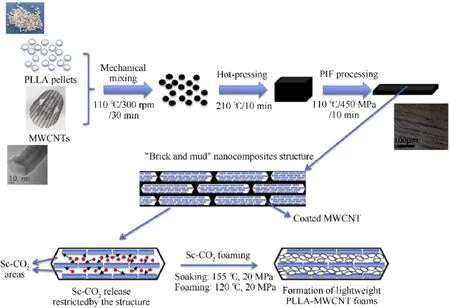
Fig.20.The production of lightweight PLLA/MWCNT nanocomposite foams utilising a combination of PIF processing and Sc-CO2 foaming [157].
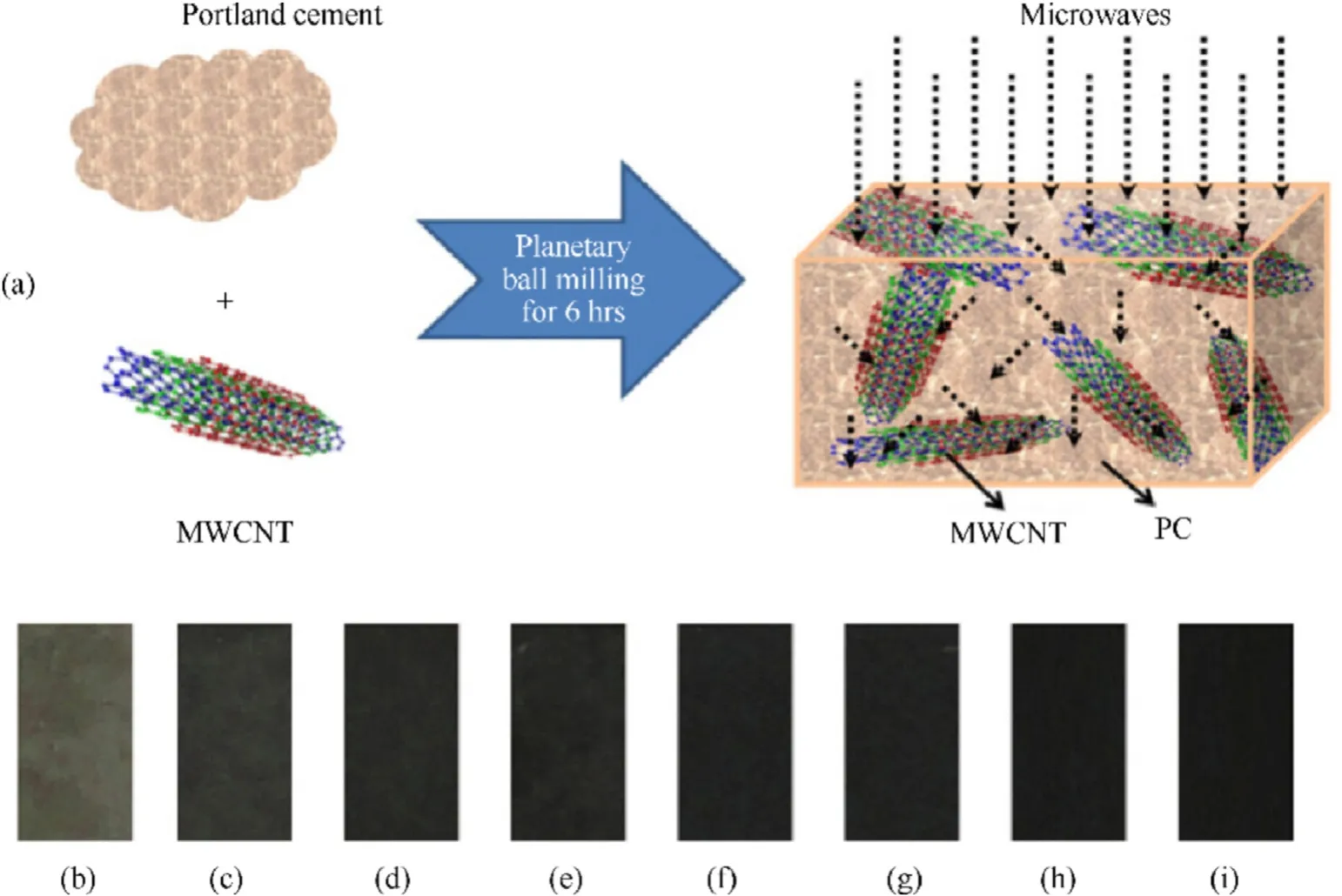
Fig.21.Schematic representation exhibits the synthesis of MWCNT/PC composite [159].
The graphene nanosheets/water-borne PU (S-GNS/WPU) laminate exhibits a low electrical conductivity relative permeability and a high enhanced conductivity of roughly 5.1 S/m.The EMI shielding performance of WPU composites containing 5 vol%(approximately 7.7 wt%) S-GNSs was roughly 32 dB [161].The PMMA composite with 4.2 vol% graphene produced a strong EMI shielding performance of 30 dB [162].To summarise,these nanocomposite products are lightweight conductive materials with decreased fibre content and better electrical and EMI shielding properties that may be manufactured by injection foam moulding.
This part discussed the EMI shielding properties of carbon composites and how to calculate their SE parameter using their volume resistivity.The previous studies demonstrated a significant ability to obstruct EM radiation.Carbon fibre cloth can shield over 99.999% of electromagnetic radiation.The presence of the resin lowers the contact between fibres,increasing the SE of carbon composites with a larger fibre volume percentage,ensuring greater continuity of conductive filler along the material's length and thickness.Larger fabric layers and thicknesses did not imply increased conductivity.The specimen with additional layers protects against electromagnetic radiation better,indicating that shielding efficacy is dependent on power dissipated along the thickness and power reflected at distinct interfaces.
5.6.Application of carbonaceous material in composite for defence structures
Structures cope with the potential damages incurred by extreme loading conditions caused by either human-made accidents or natural disasters [163].Steel and polypropylene fibres have long been the subject of study into the employment of fibres to improve the strength of blast and impact constructions.Carbon fibres,on the other hand,provide a number of potential benefits over conventional fibres,notably increased strength,stiffness,and durability.Carbon fibres are also economical because they are widely obtainable for aerospace industry [164].Carbon fibre-reinforced polymer composites (CFRPs) are viable solutions for enhancing blast protection and reinforcing existing structures in vulnerable public buildings (as shown in Table 4).Generally,CFRP has been associated with civil infrastructure in retrofitting and strengthening tasks [165].

Table 4.Summary studies on CFRP strengthened RC structures.
Explosives were used on totally clamped solid aluminium beams to examine the metal-FRP connection under impulsive pressures.The bonded CFRP can absorb a substantial amount of energy,as shown in Fig.22,and the bonding of the CFRP to the plastically deforming metallic framework gives the possibility for strengthening [166].
The blast load performance of steel reinforced concrete (RC)columns that had been upgraded with externally bonded carbon fibre reinforced polymer (CFRP) sheets was studied in an experimental study by Yan et al.[97].Close-in explosions were utilized in this study to assess 12 columns reinforced with CFRP sheets of varied thicknesses and strengthening procedures,as illustrated in Fig.23.The performance of the CFRP-reinforced columns was compared to that of a control set of specimens that did not have CFRP reinforcement.CFRP improves the blast performance of RC columns by decreasing maximum and residual displacements,improving damage tolerance,and eliminating secondary blast debris,according to the findings.
Tabatabaei et al.[164]conducted a series of blast tests to assess the blast resistance of reinforced concrete panels with or without long carbon fibres.As per a weight loss comparison of panels,the inclusion of long carbon fibres,either Type A or Type B as illustrated in Fig.24,significantly increased the concrete's spalling resistance.The fibre concrete composite panels outperformed the non-fibre concrete panel by a factor of 10 in terms of material loss during the blast.
In another experiments,Sun et al.[167] devised a composite column design for maritime constructions that included a CFRP tube jacket,a saltwater sea-sand concrete core,and internal GFRP bar reinforcements.Experiments on the dynamic response and blast resistance of these CFFT columns were carried out in the field.By successfully attenuating the front crater and rear spalling and shifting the failure of the concrete core to transverse fractures,the tubular jacket of the CFRP tube significantly boosts the blast resistance of the SSC.The restricting effect maintained even thoughthe exterior CFRP tube was damaged during the explosion.
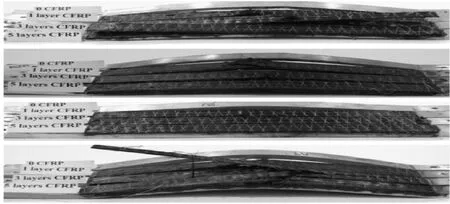
Fig.22.Photos of selected impulsive beam test results [166].
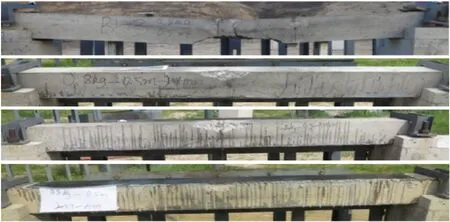
Fig.23.Damage modes under different CRFP details [97].
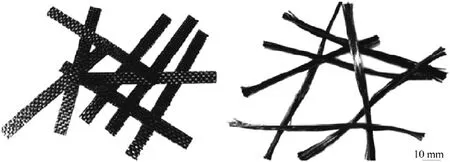
Fig.24.Fiber type A (left) and fiber type B (right) [164].
Research shows that adding CFRP to a structure can greatly boost blast resistance by enhancing structural strength,ductility,and reducing fragmentation.The fundamental behaviour of CFRP reinforced structures under blast stress is not well known,and there are no design recommendations available.This limits the technology's application to very simple structural systems and renders large-scale applications difficult to trust.The problem is complex,with numerous variables,and experiments alone cannot lead to good design solutions.A thorough understanding of structural behaviour is required.Due to the sensitive nature of the subject,many articles lack vital details like charge weights and standoffs.It is difficult to compare results and get a better knowledge of structural behaviour because of the variables covered in the studies.
5.7.Other applications of carbonaceous material composites
Nowadays,researchers have been widely applied graphene in various engineering sections such as in glucose sensors [179],uranium absorption in the nuclear industry [180],gas separation[181],thermal management materials [16] and UV resistance and self-cleaning [182].
The carbon (nano) applications have also been extensively popular in recent times.Some of the notable applications of carbon nanotubes [183],nanofibres [23],metal oxides [184] and porous carbon [185] are for supercapacitors.Also,carbon nanospheres[186] and carbon fibre/ZnO nanorods [21] are used for electromagnetic wave absorption and carbon nanosheets for chemical sensors [187].Another noteworthy application of Carbon nanofibre/SiC is for microwave absorption and low thermal conductivity.Carbon nanotubes also enhance dielectric properties [188].
Carbon composites are widely used by researchers in a variety of technical fields,including rechargeable Zn-air [189] and Na-ion[190] batteries.Other carbonaceous materials like coconut shell activated carbon is widely used to apply purification of chemicals[191].
6.Future outlooks/perspectives for advanced technology
In particular,the future directions of carbon-reinforced composites in defence technology are chemical sensor,drug delivery agents,radar technology,and nanocomposites.As for the chemical sensors,one of the most well-known sensors is the CNT-based chemoreceptive gas sensor.CNT/conductive polymers nanocomposites synergize the development of improved transducers,acquiring the simplicity,rapid response,and low-cost procedure as a result of this technique.In general,the sensor converts chemical interactions between receptors and analytes into a change in electrical resistance,which can then be analysed.Efforts were made to gather the various options for developing a thin,light weight for broad bands that retains structural integrity.Because stealth is such a broad interdisciplinary technology,effective RAS for stealth aircrafts necessitates the collaboration of aeronautical,electronics,material,and mechanical experts.The defence applications are important for the technology world in future.The carbonaceous materials reinforced with composites will be a good and better if more future investments were done on these projects.Carbon-reinforced composites show bright future to be utilized comprehensively in defence technology especially in these sectors:(i)Chemical sensor,(ii)drug delivery agents,(iii)radar technology,and (iv)nanocomposites.
7.Conclusions
In recent years,carbon-based material reinforced composite plays an important and predominant part in many applications in defence technology.Carbon-based nanomaterials have piqued the interest of a substantial segment of the scientific community as a source of high-strength and multifunctional composite materials.Study shows that polymer matrix reinforced with carbon-based material have extensively been used in protective structures owing to their lightweight coupled with the enhanced performance.Due to its low manufacturing cost,low weight,easy availability,high specific strength,stiffness and good fatigue resistance makes ideal choice for application in defence technologies in areas like aeronautics,maritime-naval ships and submarines,automotive,electronics,Electromagnetic Interference (EMI) shielding and structures.The study presents carbon nanofillers reinforced composites all distinct features and characteristics that make them the finest viable option for the development of defence technologies.
The authors declare that they have no known competing financial interests or personal relationships that could have appeared to influence the work reported in this paper.
The authors would like to acknowledge Universiti Putra Malaysia for providing research facilities.
- Defence Technology的其它文章
- Experimental study on propagation characteristics of rotating detonation wave with kerosene fuel-rich gas
- Adaptive robust control for triple avoidance -striking -arrival performance of uncertain tank mechanical systems
- Experimental study on WFeNiMo high-entropy alloy projectile penetrating semi-infinite steel target
- Numerical investigation of a muzzle multiphase flow field using two underwater launch methods
- Shock wave and bubble characteristics of underwater array explosion of charges
- A micro-chip exploding foil initiator based on printed circuit board technology

